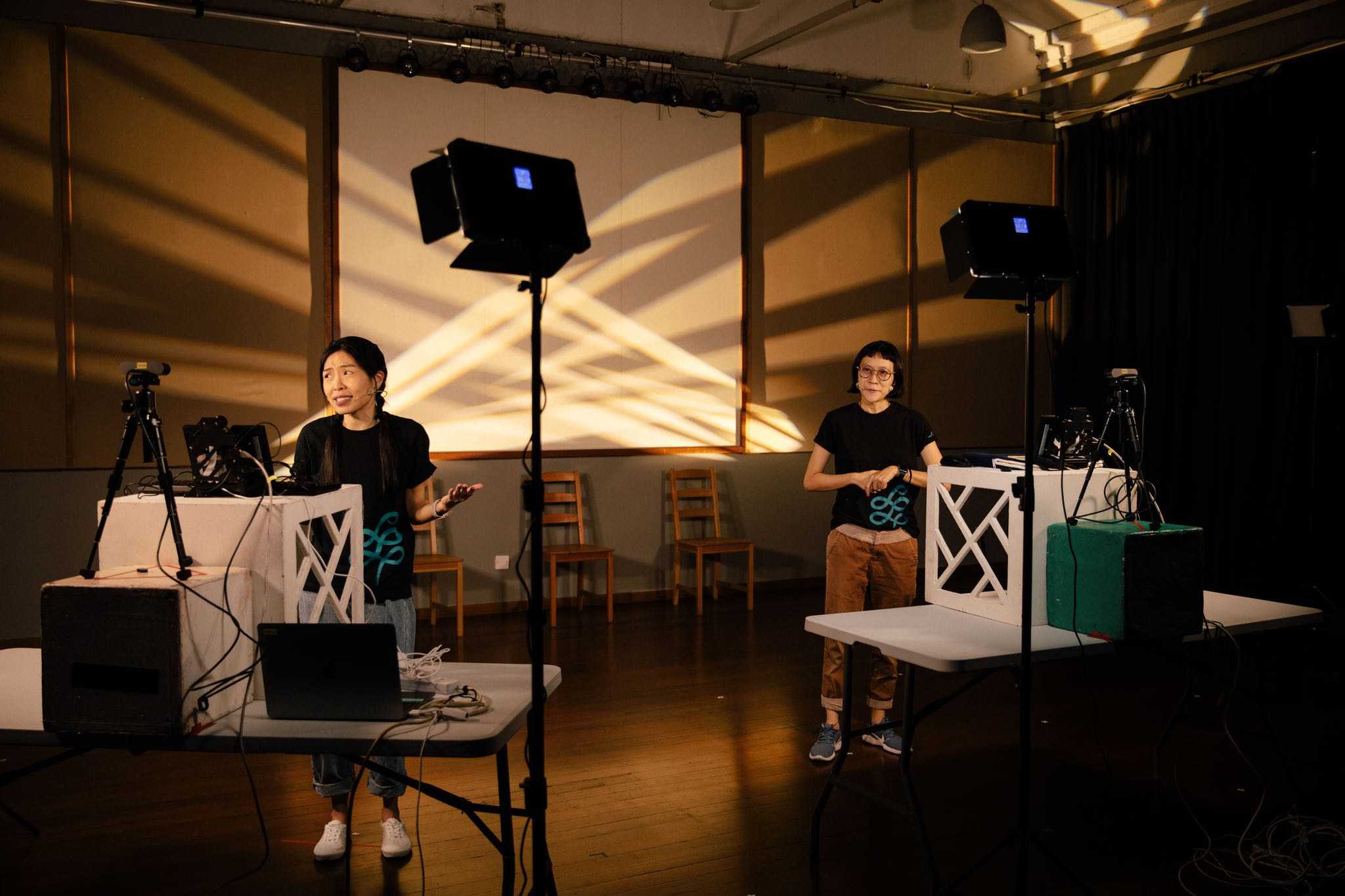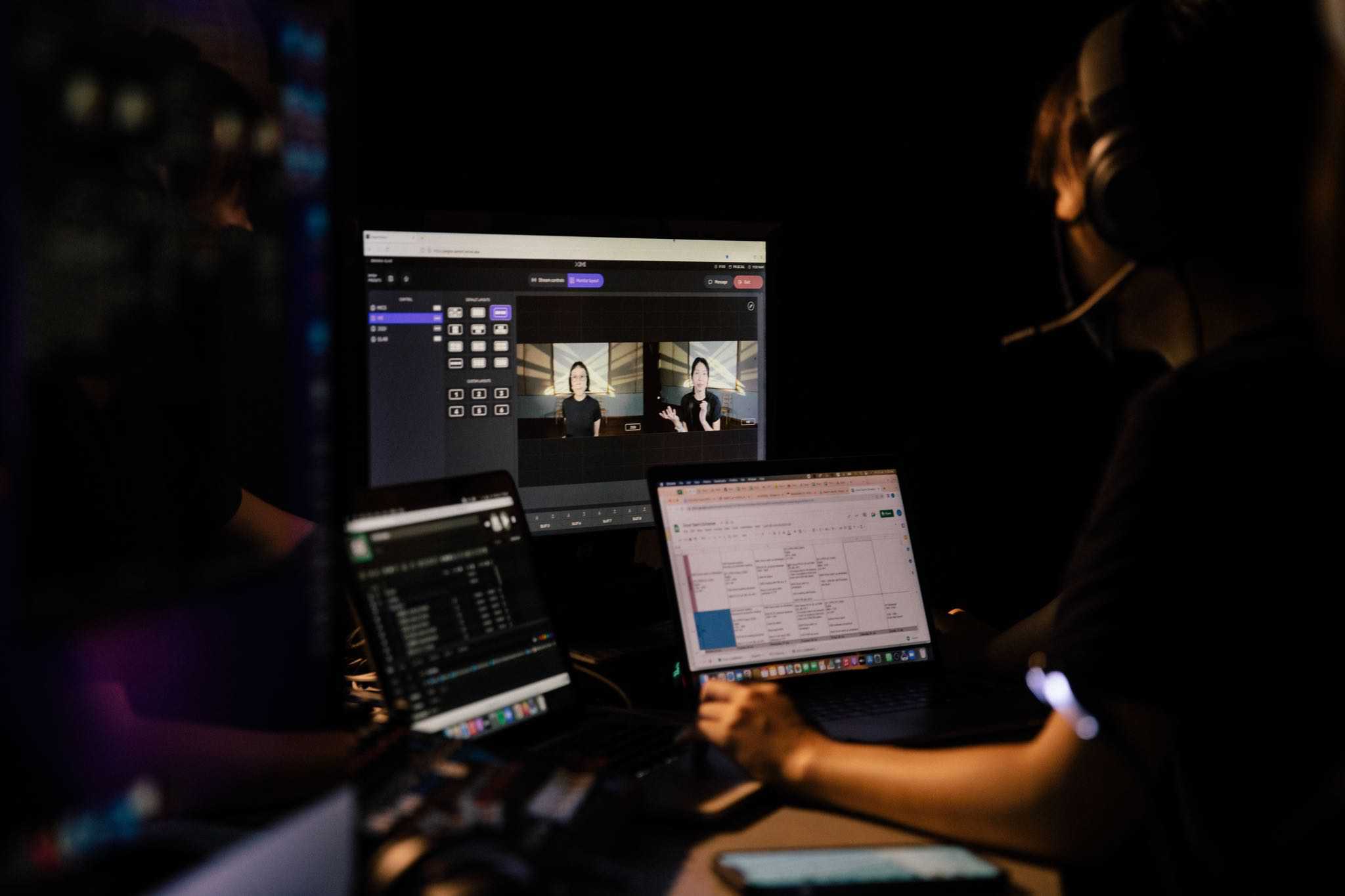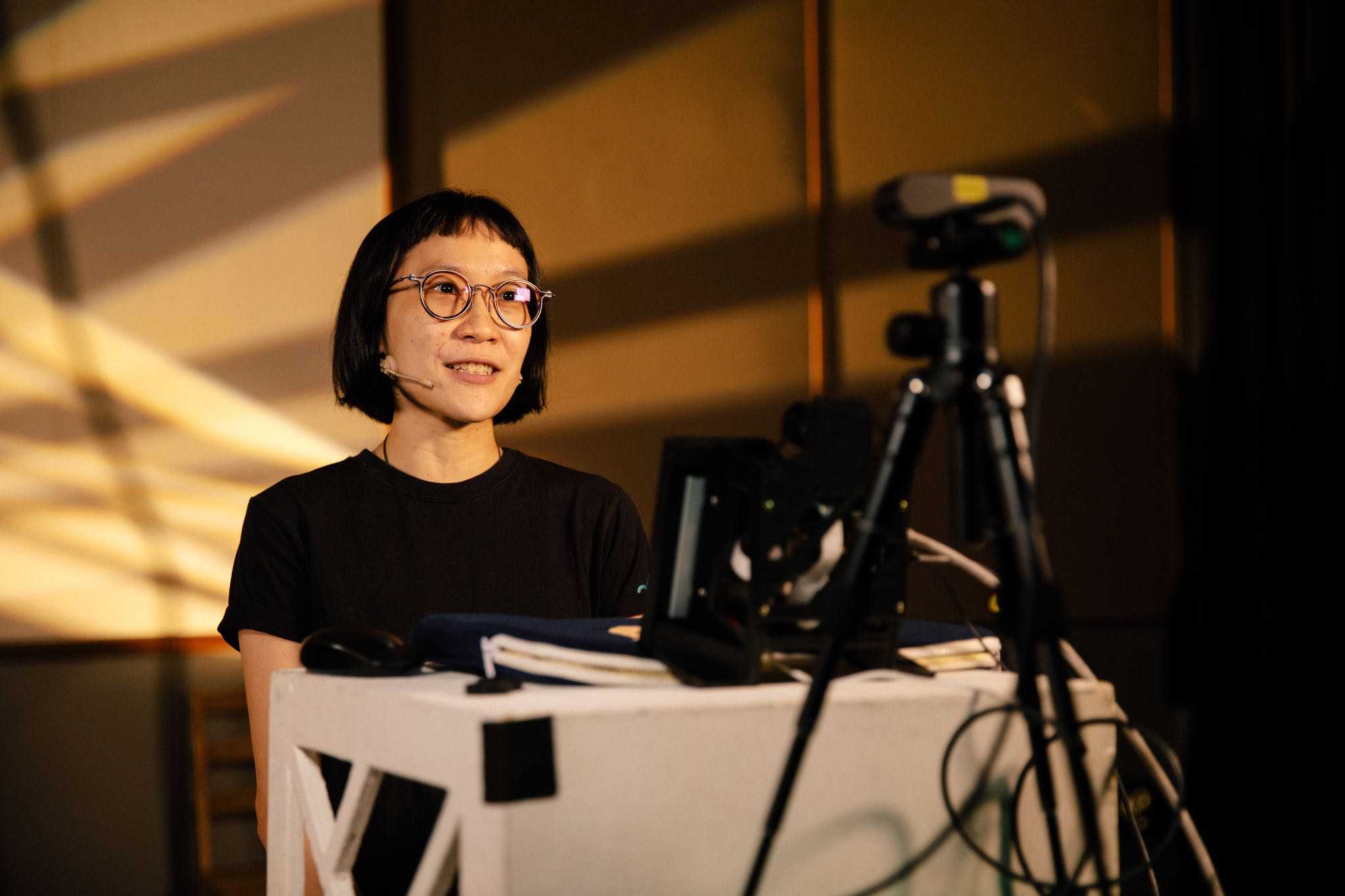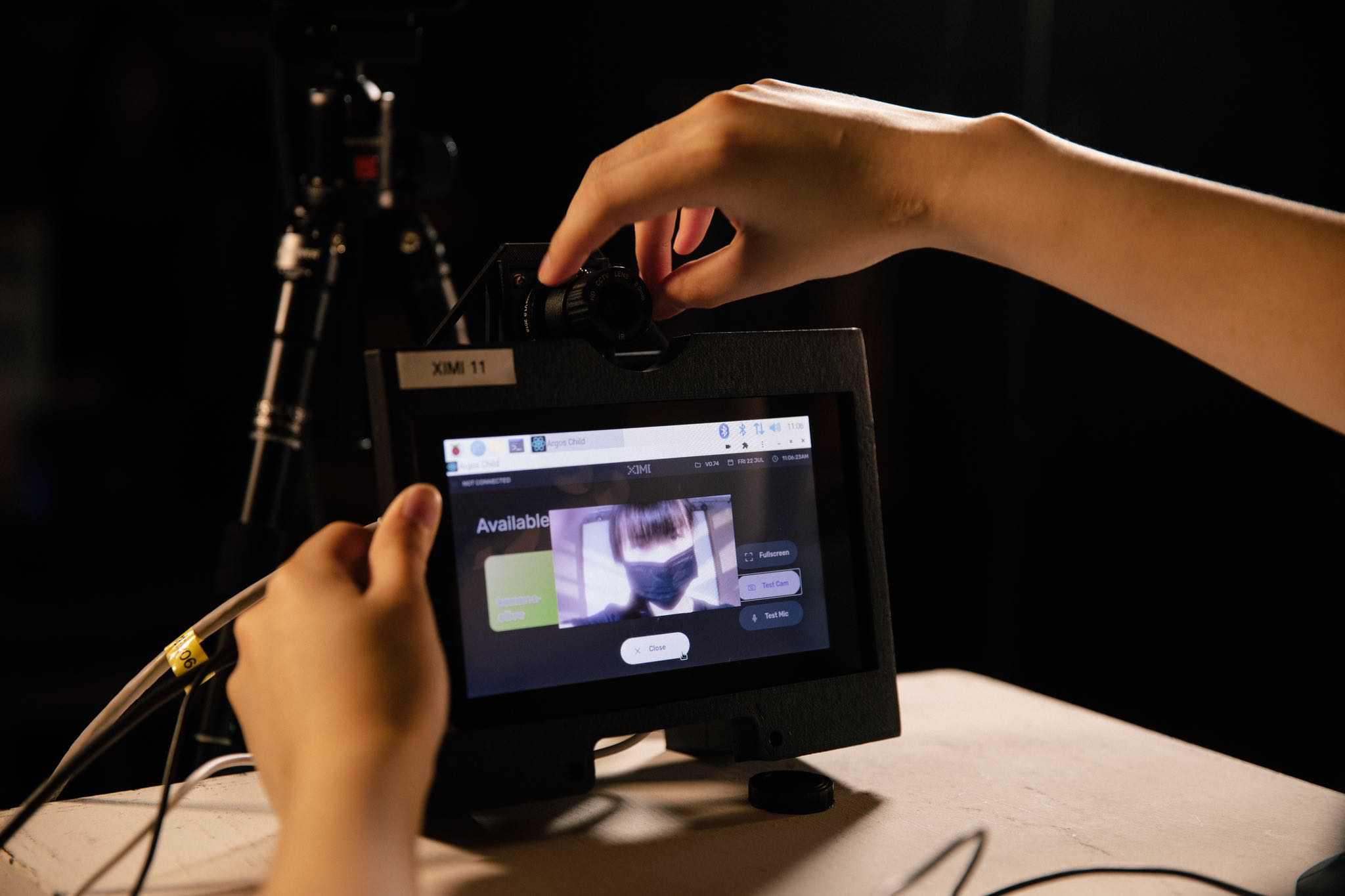
Organisation Transformation Grant Case Study
The Theatre Practice – Technology for Digital Theatre
Project Overview
The Theatre Practice (TTP) created a prototype of a new system, XIMI, an integrated hardware and software system for livestream digital performances that is more stable and reliable than current alternatives.

Challenge
When COVID-19 struck, many performing arts companies were caught off guard by venue closures and the cancellation of live performances. Going digital was the most viable solution to continue their work and programmes. Digital performances required reliable hardware and software for stable streaming and synchronisation. Most artists and arts organisations did not have access and technical know-how to such systems.
The Vision
TTP saw an opportunity to provide a new technological solution for creating digital performances in this new era of art making. It would have minimal lag and latency and deliver a great viewer experience. The system should also have integrated hardware and software—a ‘plug-and-play’ product that is easy to use and accessible to artists. Finally, the system should be affordable with cost savings coming from using open-source hardware and software.

Outcomes in a Nutshell
A prototype of an integrated hardware and software system, XIMI, for livestream performances
Reduced lag from 233 milliseconds to less than 107 milliseconds
Eradicated connectivity issues arising from connecting multiple devices to a single network
Lowered latency by more than 40%
Impact
A solution that removes the common problems of lag and latency was created, allowing arts organisations to better present their performances and workshops. The project has also facilitated testing and experimentation with several international arts groups. The stability and reliability of this system will enable future international artists collaborations and the exploration of new ways of making art in the digital realm.
XIMI can also benefit industries beyond performing arts, potentially in MICE (Meetings, Incentives, Conventions, Exhibitions), education, and hospitality sectors. XIMI provides an additional source of revenue stream for TTP through the sale or leasing of the system.
3-2-1 Learnings
“It is the process that matters. The failure we face today will be tomorrow’s success.”
3 Must-Dos
Things you must absolutely get right
- Test the prototype in different contexts and use-cases to improve the product. TTP and their vendor, Good Work, tested the prototype with 6 different collaborators in three countries, with different artistic contexts, art form, and performance needs.
- Stay open to growth. The project enabled TTP to deepen their skills in programme development and production. It also made them more adaptable in the face of challenges.
- Work with perseverance. Developing a solution from scratch demands a lot of time and energy, as well as tenacity and perseverance.
2 Do-Next
Critical next steps to sustain the effort
- Continue to make system improvements to XIMI.
- Conduct market research to identify and develop a viable business model, possibly through the sale or lease of XIMI. Assess the needs of different arts organisations and art forms to enable a deeper level of customisation of the platform.
1 Do-Differently
What they wished they had done differently from the start
- Factor in a longer research and development period. The duration provided (7 months) to execute and complete the project was challenging. Organisational transformative projects typically require a longer lead time.
Challenge
When COVID-19 struck, many performing arts companies were affected by venue closures and the cancellations of live performances. Going digital was the most viable solution to continue their work and programmes, but many performing arts companies lacked experience in creating digital performances.
This compelled the 57-year-old The Theatre Practice (TTP), one of Singapore’s longest-standing bilingual theatre institutions, to rethink its relevance in the new normal.
“We need to reimagine live performances. We need to keep the ‘live performance element’ in digital theatre, and strengthen our art-making skills to deliver quality digital performances,” said Ho Shu En, TTP’s Partnerships Executive.
Digital performances tend to be plagued by the following issues that affect audience experience.
- Lags introduced by additional screen and audio capture sources of input, from commercial online meeting or conference platforms.
- Connectivity issues arising from connecting multiple devices to one network.
- Difficulties in synchronising video and audio sources in real time, which affects performers’ cues.
Live streaming performances require reliable hardware and software that provide stable streaming and synchronisation. They also require a level of technical know-how, which TTP understands many artists and small arts organisations lack.
The Vision
TTP saw an opportunity to provide a solution for creating digital performances in this new era of art making. This would be a new and reliable technological system that has minimal lag and latency, which would deliver a great audience experience.
The system should also have integrated hardware and software—a ‘plug-and-play’ product that is easy to use and accessible to artists who have limited resources to experiment with high-end technologies like AR (augmented reality) or VR (virtual reality).
Finally, the system should be portable and affordable with cost savings coming from using open-source hardware and software.
TTP realises that problems of lags and connectivity are common and not exclusive to theatre productions. The solution developed by TTP has potential applications in other industries such as MICE (Meetings, Incentives, Conventions, and Exhibitions), education, and hospitality. In addition, XIMI as a digital tool reduces travel and the carbon footprint of cross-border collaborations. TTP believes the platform will be useful beyond the COVID-19 pandemic.
The Journey
Discovery. Learning-by-Doing. Overcoming Challenges.

System
TTP embarked on a Research and Development (R&D) project called XIMI with vendor, Good Work, to create a prototype of an integrated hardware and software system for livestream performances.
XIMI is designed with two key functions. The first function is a synchronisation tool for audio and video feeds that minimises latency. As data traffic travels at different speeds even for users on the same network, latency becomes a fundamental impediment to live digital performance. By synchronising the feeds, XIMI allows performers in physical and virtual settings to perform live together in real time, as if they were physically in the same space.
The second function is a Stage Management Platform. With the shift from a physical venue to a digital stage, stage management workflows of live performances had to be integrated into the live streaming process. XIMI created a digital backstage that enables performers and the stage management team (who are not physically together) to do their preparations out of the audience’s sight.
A prototype was created, with two key components: the parent node and child nodes. The parent node is a browser-based (Firefox) software that connects up to 9 child nodes. The child node module is a compact audio-visual device that is easily deployed and connected to the XIMI system, comprising a Raspberry Pi 4 Model B, a HD Webcam with mountable lenses, a Raspberry Pi Touch Display, assembled in a 3D printed PLA casing. This module was designed to be flexible in its uses and maintenance with features including a mount for tripod use, the option to change camera lenses, and easy access of hardware.
XIMI was made to be compatible with existing third-party streaming software and hardware such as external display monitors and sound mixers commonly used in digital theatre productions. It was designed to be scalable to match the needs and budget of each production, and the unit cost of 3D-printing the hardware was also kept low to keep the system affordable for artists. The intention is to eventually make the 3D printing files and user manuals (for both software and hardware set-up) available online for all to use and all materials and parts available in the market for purchase.
Process
In the first phase of R&D, TTP and Good Work sent the XIMI prototype to 6 collaborators from Singapore, Taiwan and Germany to test the applicability of the prototype in different project settings, with different performance needs, to identify areas for improvement.
Across all 6 collaborations, the XIMI prototype achieved the objective of synchronising audio and video feeds by reducing lag and keeping latency to a minimum. While there was some level of instability expected of a prototype, XIMI fundamentally worked well. The collaborators were able to run rehearsals and shows smoothly without many technical difficulties. This included two groups which were working with collaborators based in different parts of the world. XIMI as a stage management tool also streamlined communications between crew and artists. Additionally, there is evident reduction in manpower resources and time required to resolve audio and visual delays.
One of the collaborating teams reflected: “It felt like everyone was in the same room. It was very comfortable performing together. It’s a very subtle difference, and the rehearsal can run very smoothly compared to even Zoom, even though we were aware that we were not all in the same space.”
The success did not come easy, and there were several challenges that the XIMI project team had to overcome. One main challenge was their intent of making XIMI a non-proprietary technology—to provide artists accessible and affordable options of using their existing hardware accessories, and the flexibility of customising the XIMI set-up according to their project needs. The individual components and sub-assemblies of the XIMI hardware are readily available in the market, allowing anyone with reasonable technological skill to build their own XIMI units by referring to the technical and user manuals.
However, this flexibility also introduced several potentially destabilising variables to the technical set-up. On their own, the individual technical components were not inherently complementary, and the team had no quality control over each component. Hence technical problems often require lengthy troubleshooting processes to diagnose the causal factor(s). But every failed testing allowed the team to experiment and fine-tune the system. The 6 participating collaborators allowed the team to test XIMI in different permutations, which provided data to develop XIMI further. “We realised how important it was to have gone through the different project trials which enabled us to spot errors, diagnose, and fix them during R&D,” said Ho.
Ultimately, TTP was able to create a user-friendly, technologically advanced digital performance solution. In particular, they solved the 3 common problems of digital performances with the XIMI system, which was in reducing lags from 233 milliseconds to less than 107 milliseconds, eradicating connectivity issues arising from connecting multiple devices to a single network, and lowering latency by more than 40%.
Reflections
The XIMI system was originally developed to enable a COVID-19-proof performance planning but the digital platform is now enabling cross border and cross-disciplinary collaborations. TTP highlighted the greatest satisfaction came from working and uniting stakeholders across industries and borders. The team faced tough challenges but the thought that XIMI would be a utility and service to the arts industry (and potentially to other industries too) kept the team motivated.
This project has been supported by NAC's Organisation Transformation Grant. For more information and resources on NAC's grant schemes, please visit: https://www.nac.gov.sg/



